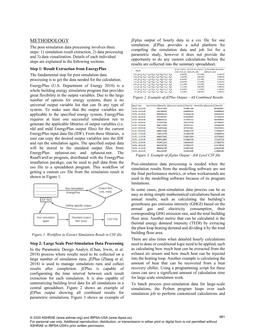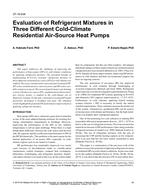Single-duct variable-air-volume systems often use series- and parallel-fan-powered terminal units to control the airflow in conditioned spaces. A laboratory-verified model of single-duct variable-air-volume systems was developed to simulate both series and parallel fan terminal units where the terminal unit fans are controlled by either silicon-controlled rectifiers or electronically commutated motors.
The paper provides the equation needed to simulate the performance of a fan-powered terminal unit. The simulation model developed here includes a five-zone office building whose performance was simulated in five cities in the United States: Houston, Phoenix, Chicago, New York, and San Francisco. The model includes total plant energy, total cooling plant energy, primary fan energy, terminal unit fan energy, and heat energy added.
The single-duct variable-air-volume simulation results showed that the reduction in the annual energy used by the office building with series-fan-powered terminal units having electronically commutated motors compared to series units having silicon-controlled rectifier-controlled motors varied by location. The largest energy savings for the building was in Phoenix (8.4%), while the smallest was in Chicago (5.9%). In all cases, the reduction in electricity used by the terminal unit fans with electronically commutated motors was near 65%. These results indicate that using fan-powered terminal units with electronically commutated motors offers the potential for sizable savings in energy compared to units with silicon-controlled rectifier-controlled motors
Citation: ASHRAE Transactions, Volume 118, Part 1, Chicago, IL
Product Details
- Published:
- 2012
- Number of Pages:
- 12
- File Size:
- 1 file , 1.5 MB
- Product Code(s):
- D-CH-12-017


